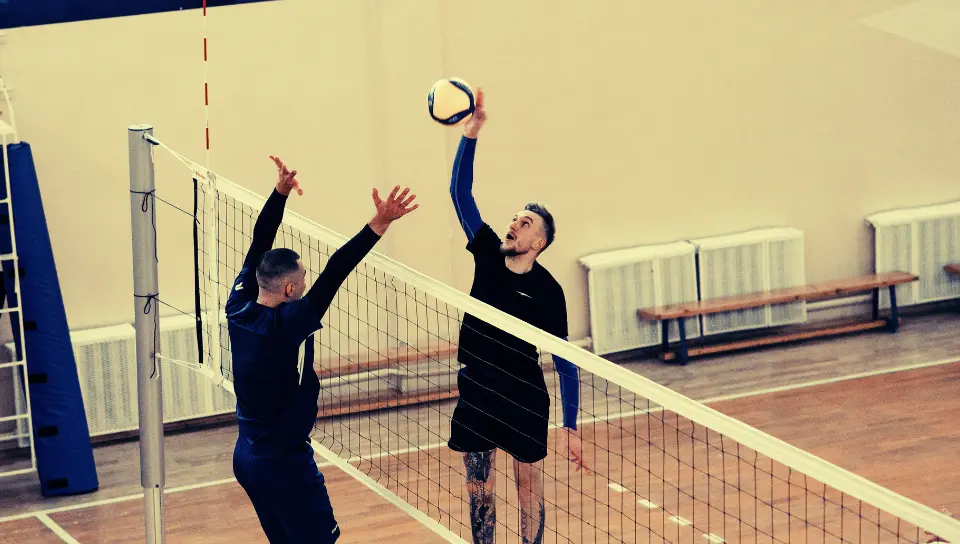What is the Opposite Hitter in Volleyball
The Opposite Hitter in Volleyball is an attacker specialized in attacks at the end of the net and is the main attacker of a Volleyball team.
The Opposite and the Setter
The Opposite Hitter gets this name because he or she is always opposite to the Setter during the rotation and is always the main attack option in the “safe” balls.
What is the role of the Opposite in Volleyball?
The role of the Opposite Hitter in Volleyball is to attack. He or she may take part in the defense occasionally, but must always be available to attack.
Main Features of the Opposite Hitter in Volleyball
The main features of an Outside Hitter in Volleyball are:
- Good height and a powerful attack;
- Accurate attacking technique (spike and dink);
- Specialized in attacks at the end of the net and at the back of the court;
- Specialized in attacks with quick balls;
- Specialized in attacks with high balls;
Outside Hitter Position in Volleyball
The Outside Hitter is an attacker used in the 5-1 Formation in Volleyball.
The Outside Hitter main attacking position is at the end of the net, in position 2, also known as right front.
Depending on his or her position during the rotation, the Opposite Hitter may also attack from position 4 (left front).
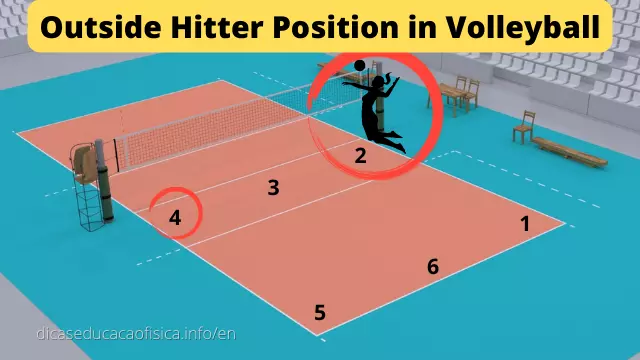
Outside Hitter Moves in Volleyball
As we have said, the Opposite Hitter is an attacker of the 5-1 Formation. We will now show the Opposite Hitter moves in the 5-1 Formation in Volleyball.
Opposite Hitter in the Attack Zone
- Opposite Hitter in position 2 – This is the ideal position for the Opposite because he or she does not need to move to perform the attacks at the right front (position 2).
- Opposite Hitter in position 4 – When the Opposite occupies position 4 in the rotation, he or she does not need to move to attack because he or she also attacks from the end of the net in position 4 (left front).
- Opposite Hitter in position 3 – When the Opposite occupies position 3 in the rotation, he or she moves to position 2 where he or she performs a powerful right front attack.
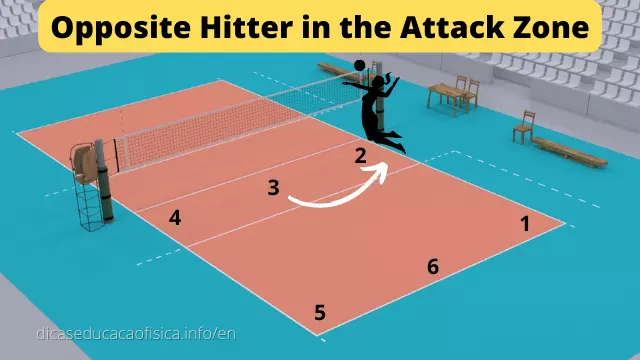
Opposite Hitter in the Back Zone
IMPORTANT NOTE: According to the Volleyball Rules, the players positioned in the Back Zone (positions 1, 6 and 5) are not allowed to attack stepping on the attack zone. Therefore, all of the attacks made by the Opposite, when in the back zone, must be back zone attacks.
- Opposite Hitter in position 1 – He or she does not take part in the Service Reception, but infiltrates to attack, from the back zone, at the right front (position 2).
- Opposite Hitter in position 6 – He or she does not take part in the Service Reception, but infiltrates to attack, from the back zone, at the right front (position 2).
- Opposite Hitter in position 5 – He or she does not take part in the Service Reception, but infiltrates to attack, from the back zone, at the left front (position 4) or at the right front (position 2).
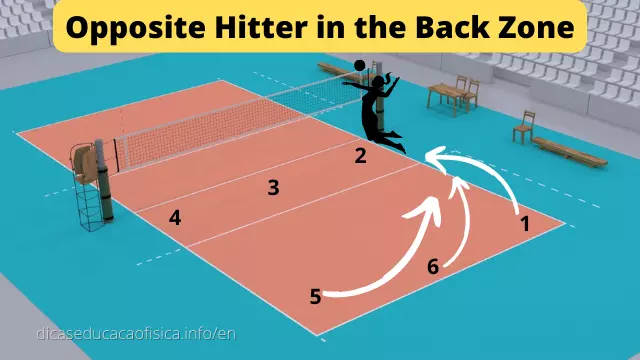
Opposite Hitter and Defensive Role
In Defense against attacks, the Opposite takes part in the Block either in position 2 or in position 4 (right front and left front) when he or she is in the attack zone in the rotation.
When the Opposite is in the back zone in the rotation, this player takes part in the defense, always positioning him or herself in position 1, that is, when he or she is either in position 5 or in position 6, this player must move to position 1.
Being positioned in position 1, he or she may more easily infiltrate to perform attacks from the back zone at position 2 (right front).
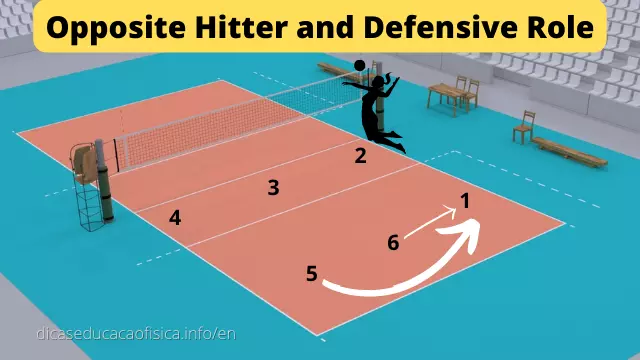
The Opposite Hitter in the Service Reception
The Opposite Hitter is the player specialized in attacking in the 5-1 Formation. For this reason, he or she does not take part in the Service Reception, staying positioned only to take part in the attack.
More Volleyball Content
- Type of Serves in Volleyball
- Setter in Volleyball
- Spike in Volleyball
- Rules of Attack in Volleyball
- Bock in Volleyball
- Attack in Volleyball
- Volleyball Serve Rules
- Setting in Volleyball
- Volleyball Court
- The History of History
- All Volleyball Rules
- Video Class Volleyball Basics
- Volleyball Tactics
- Volleyball Positions
- Volleyball Rotations
